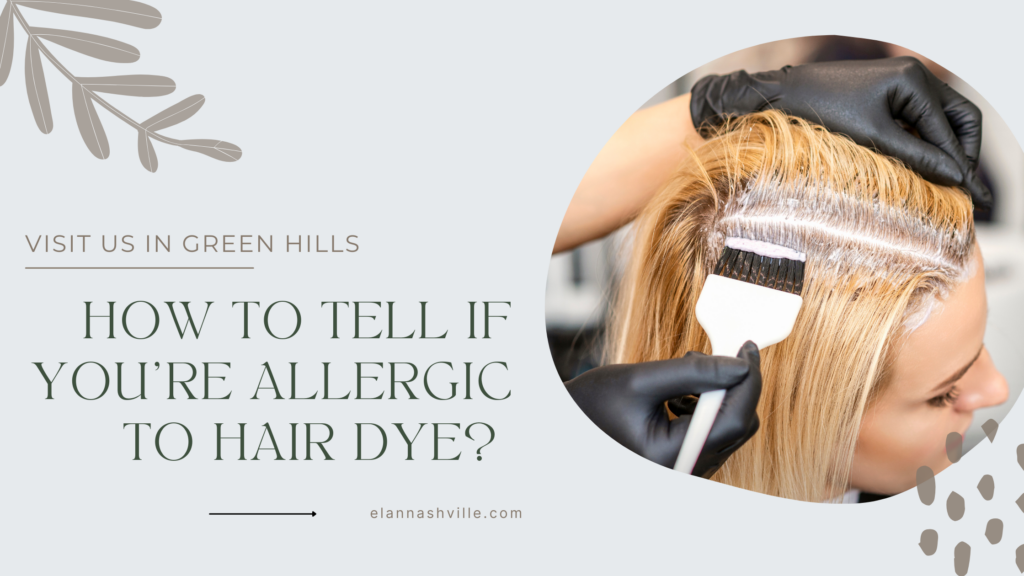Protect Your Scalp: Navigating Hair Dye Allergies

Hair coloring can enhance your look, but it also comes with potential risks. Many hair dyes contain ingredients that may irritate your scalp and cause allergic reactions. At Elan Hair, we want to ensure your hair coloring experience is safe and satisfying. Understanding the risks and taking the right precautions can help you avoid adverse reactions. Here’s what you need to know.
Understanding Hair Dye Allergies
Most allergic reactions to hair dye are caused by paraphenylenediamine (PPD), a chemical also found in temporary tattoos, printer ink, and gasoline. In hair dye, PPD is mixed with an oxidizer, becoming partially oxidized and more likely to cause allergic reactions in sensitive individuals.
Symptoms of Hair Dye Allergies
Allergic reactions to hair dye can range from mild to severe and may take up to 48 hours to appear. Symptoms include:
– Stinging or burning sensations on the scalp, face, or neck
– Blisters or welts
– Itching or swelling of the scalp and face
– Swollen eyelids, lips, hands, or feet
– Angry, red rash anywhere on the body
In rare cases, a severe allergic reaction called anaphylaxis can occur, which is a medical emergency. Symptoms of anaphylaxis include difficulty breathing, swelling of the throat and tongue, and fainting. If you suspect anaphylaxis, call 911 immediately.
Treating Hair Dye Reactions
If you experience a reaction to hair dye, here are steps you can take:
- Immediate Mild Reaction: Rinse the dye off immediately with warm water and mild soap or shampoo.
- Potassium Permanganate: Apply a solution of potassium permanganate to the affected area to fully oxidize PPD.
- Topical Corticosteroids: Use over-the-counter creams to treat skin rash or itching, but avoid using them near the eyes or mouth.
- Hydrogen Peroxide: Apply as a mild antiseptic to calm the skin.
- Oral Antihistamines: Take products like Benadryl to reduce inflammation and itching.
- Persistent Symptoms: If symptoms worsen or do not improve, contact your doctor. Prescription-strength corticosteroids may be necessary.
Common Allergenic Ingredients in Hair Dyes
Besides PPD, other ingredients like ammonia, resorcinol, and peroxide can also cause allergic reactions. It’s crucial to read labels carefully and be aware of the ingredients in your hair dye products.
Reducing the Risk of Reactions
Patch Test
Always perform a patch test before using a new hair dye, even if it’s your regular brand. Apply a small amount of the dye solution behind your ear or on your inner elbow and leave it to dry. Follow the product’s instructions. If you experience any irritation or feel unwell, do not use the product.
Allergy Clinic
Consider getting a patch test done at an allergy clinic to identify any chemicals you’re sensitive to. This can help you avoid products containing those allergens.
Safe Dye Application
If you do not react to the patch test, follow these safety tips:
– Do not leave the dye on longer than recommended.
– Wear gloves when applying the dye.
– Rinse your hair thoroughly after dyeing.
– Carefully follow all product instructions.
Choosing PPD-Free Alternatives
If you’ve had a reaction to PPD, it’s best to avoid products containing this chemical. Switch to non-permanent, PPD-free hair dyes. However, be aware that reactions can still occur with other ingredients.
Stay Safe with Elan Hair
At Elan Hair, your safety and satisfaction are our top priorities. Our experienced stylists can help you choose the best products and methods to achieve your desired look without compromising your health. We offer consultations and allergy testing to ensure you have a positive hair coloring experience.
For expert advice and safe hair coloring, contact Elan Hair at 615.269.0222 or visit our website to book your appointment. Let us help you achieve beautiful, vibrant hair safely!
